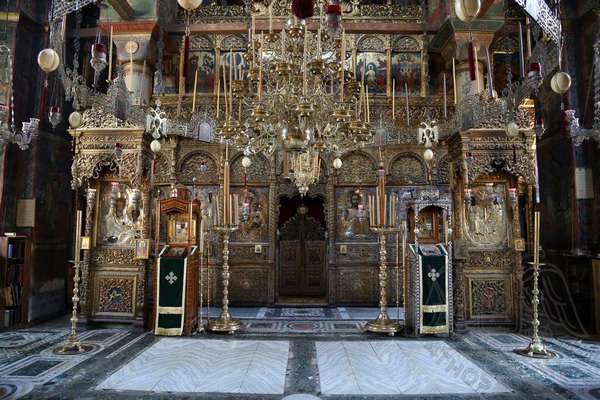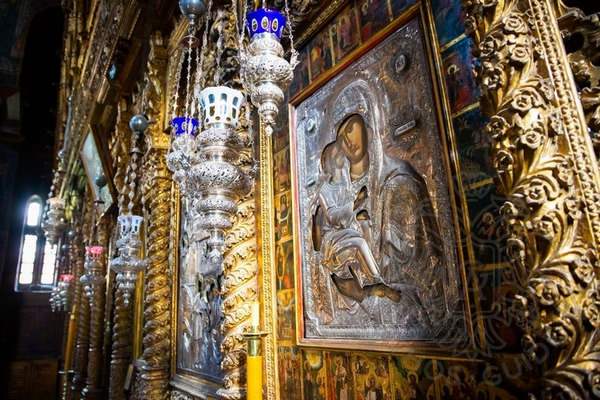History and present days
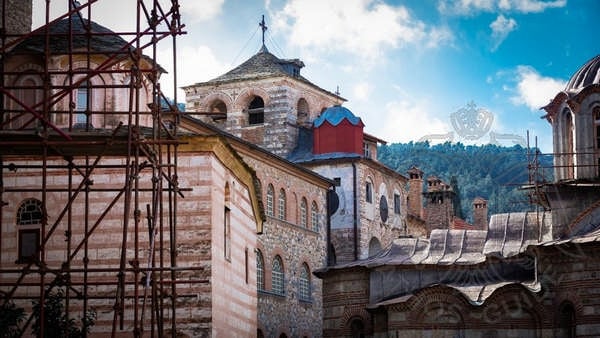
A carriage road ascends from Giovanitsa to the Monastery of Hilandar. To the right, lower down in the ravine, one can see the Cell of Saint Spyridon of the Zografou Monastery. The terrain is sandy, dominated by pine trees. A road to the right, leads to Saint Philip, a metochion of the Xenophontos Monastery. The church is abandoned, though its exquisite, multicolored wooden iconostasis remains intact. The auxiliary buildings, kitchen, trapeza and wine cellar, are in a state of ruin.
The main road continues uphill. Further along, it is separated into two different paths. Following the right path with the sign "ΧΙΛΑΗΔΑΡ ΗΟΒΙ ΠΥΤ", one passes through the Taurokaliva area, historically used as winter pastures for bulls. It reaches an altitude of 305 m. offering a panoramic view of both coasts of the Athonite Peninsula, extending to Vourvourou in Sithonia, Cape Arapis, Cholomontas and Pangaion. The southern area is known as Pasa Konaki, while to the north lies Proto Nero, featuring a lake and vineyards. There, in 1347, Stefan Dušan camped with his army. According to the legend, it was then that he violated the Avaton of Mount Athos by bringing his wife with him.
In the area of the hermitage, King Stefan the First (1262) built the tower of the Transfiguration, which no longer exists. By the 19th century, the hermitage used to be a skete with Russian monks living in kalyves.
The eastern wing, with the towers of Saint Sava and Saint George, dominate the view. The road arrives at the monastery’s entrance. However, to gain a more comprehensive perspective of the architectural complex, one must approach from the sea.
The arsanas on the eastern coast lies 2.5 km from the monastery. The two older arsanas were located to the east and west of the kalyve of Saint Basil. However, they were abandoned and eventually fell into ruin. The current arsanas structures date back to 1584, with a restoration permit issued in 1622.
The arsanas is a two-story structure, with two workers’ houses and the Karaouli Tower placed nearby. Near the tower, one can still find the remains of the residence of the former Ottoman guardian. The police station is now housed in the structure down the arsanas. Right on the opposite lies the rocky islet of Saint Basil, while further west stands the Saint Basil Hermitage, also known as the Palaiomonastiro (Old Monastery).
The oldest structure is the fortified tower, built between 1300–1302 by King Stefan Milutin of Serbia (1282–1321), after the monks’ request for protection against pirate raids. It originally contained a chapel, which collapsed.
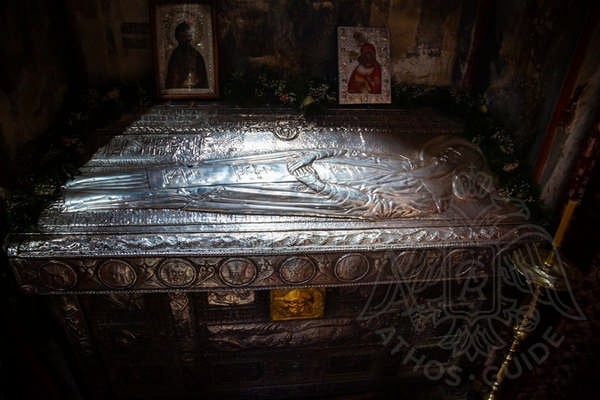
A small monastery was founded by Saint Basil, a disciple of Saint Euthymius the New, which was dedicated to the Ascension of Christ. The monks of this small community were very close to those of the Esphigmenou Monastery. It appears that, following the Ascension Vigil, the monks of Hilandar and Esphigmenou would hold together a holy service to Saint Basil.
The oldest building is the tower, which was built between 1300 and 1302 by the King of Serbia, Milutin (1282–1321), at the request of the monks who sought protection from pirate raids. The tower was also known as the "Fortress of Hrusija" (Χρυσή, which means Golden) named after the ancient city of Hrusija, which gave the area its name.
Approximately 500 meters inland from the arsanas, stands the Milutin Tower. Some scholars suggest that this was the actual "Tower of Hrusija", rather than Saint Basil’s Tower. It is also known as the "Tower of the Cavalier" and was built during the reign of Stefan Uroš II Milutin (1282–1321), a time of increased pirate raids.
The road from the Tower of Milutin to the Monastery of Hilandar passes through an impressive forest of cypresses. Along the way, one encounters a smaller path leading to the Monastery of Esphigmenou, a shrine that houses the Cross of Stefan Dušan and a fountain bearing a commemorative inscription from the visit of King Alexander I Obrenović of Serbia in 1896. As one ascends toward the monastery, the surrounding landscape unfolds, revealing orchards, workers’ houses, and auxiliary buildings.
The cultivated land precedes the monastery itself. Taking the main road, we follow a cobbled footpath, passing by the shrine of Theotokos Tricherousa. This chapel houses remarkable frescoes dating back to 1809, depicting the history of the sacred icon and its arrival at the monastery.
The ground plan of the Monastery of Hilandar forms an irregular polygon. The architectural diversity of its wings reflects various phases of construction, each bearing witness to the monastery’s long history.
History
There are numerous etymologies proposed for the name of the monastery. One of it suggest it derives from chilioi + andres (a thousand men, in memory of the number of raiders). However, the most plausible explanation is that the name originates from the founder (Chelandarios or Chelandaris) of a small monastic settlement, mentioned in a 10th-century document. This hermitage, that was eventually abandoned, is described in a document from 1015 as a Greek and completely deserted community. The last recorded appearance of the name Chelandari dates to 1169, after which the monastery became known as Hilandar.
The foundation of the monastery is closely linked to King Stefan Nemanja and his youngest son, Rastko. Rastko renounced worldly life, became a monk in Mount Athos and took the name Sava. King Stefan followed his son’s example, left his throne and embraced the monastic life. After becoming a monk at Studenica, he lived for some time on Mount Papikion, before arriving at Mount Athos, where he resided with his son at the Monastery of Vatopaidi. At the request of Stefan’s royal successor, the monastery granted Sava and Simeon the abandoned monastic settlement of Hilandari. This donation was confirmed by a chrysobull issued by the Emperor Alexios III Angelos (1198), declaring that the settlement was to be an “eternal gift to the Serbs.” Just as the Monastery of Iviron originated from the Monastery of Great Lavra, Hilandar was established under the patronage of the Monastery of Vatopaidi. Similar to Iviron, Hilandar was also granted, by an imperial decree, the right to own and operate a large ship.
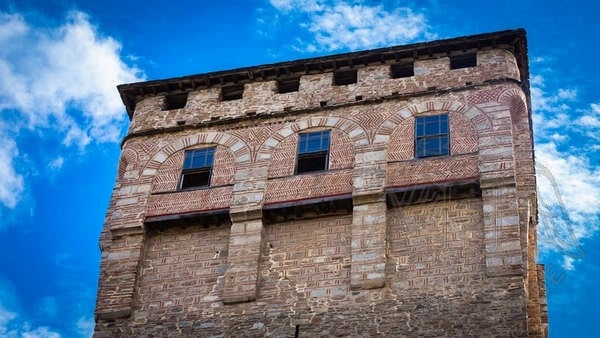
A bond of spiritual kinship developed between Hilandar and Vatopaidi. Saints Sava and Simeon rebuilt the settlement, thereby becoming the founders of the monastery. However, Saint Simeon passed away before the construction was completed (February 13, 1199), leaving Saint Sava to oversee the project’s completion. Their efforts were supported by Sava’s brother, King Stefan II. The saint also composed the monastery’s Typikon.
The Typikon established Hilandar as an independent monastery from both the authority of the Protos and the emperor. Shortly afterward, Saint Sava was elected Archbishop of Serbia and departed from the monastic community. Many Serbs began to arrive at Hilandar, which received significant benefactions from the Emperors John III Doukas Vatatzes and Michael VIII Palaiologos. The rapid growth of the monastic community led to the incorporation of several nearby monastic settlements. The settlement of Zygos, which held the fourth rank in the Athonite hierarchy, gave its status to the Monastery of Hilandar. The monastery’s land soon encompassed the entire interior of the peninsula, stretching from the eastern to the western coast. Economic prosperity was accompanied by great spiritual flourishing, as Hilandar became a significant religious and cultural center for the Serbian people, bringing out many distinguished hierarchs, bishops and patriarchs.
Hilandar acquired numerous priceless treasures and received financial support from Serbian rulers such as King Milutin, King Stefan Dušan (1347), Prince Lazar, Despot Branković and the Emperor Andronikos II Palaiologos. Its prosperity continued even after the Ottoman conquest, thanks to donations from Russian tsars and the rulers of the Danubian principalities. The number of Serbian monks at Hilandar and throughout Mount Athos increased. During this period, the Serbian presence was also strong at the Monastery of Saint Paul, while the Protos of Mount Athos has also been Serbian for a long period.
During the 17th century, the monastery declined and fell into hardship. The Serbian monastic population was limited, so that by around 1762, Bulgarian-speaking monks had become the majority. Among them there was Monk Paisius (†1798), author of the Slavo-Bulgarian History, a work that played a crucial role in awakening Bulgarian national consciousness. The monastery suffered almost complete destruction due to fires in 1722 and 1891. The visit of King Alexander I Obrenović of Serbia (1896), who paid off Hilandar’s entire debt, led to an increase in the Serbian monastic population, that ultimately regained control of the monastery’s administration. When Mount Athos was liberated from the Ottoman rule (1912), Hilandar supported the position that the Holy Mountain should be incorporated into Greece, while the Monastery of Saint Panteleimon advocated for internationalization.
Saint Sava
.jpg)
In 1219, Saint Sava traveled to Nicaea, which was the seat of the Byzantine Empire during the Latin occupation of Constantinople. There he convinced the emperor and patriarch to grant independence to the Serbian Church. He was subsequently elected as the first Archbishop of Serbia. As a church leader, he organized everything with wisdom, strengthened the Orthodox faith and opposed to all heresies. He founded many monasteries, churches and schools. Twice, he made a pilgrimage to the Holy Land, resolved conflicts between his ruling brothers and significantly contributed to the spiritual and cultural development of his people. He composed the Typikon of Hilandar and Studenica Monasteries, while he also wrote a book about the life of his father, Saint Simeon. He is recognized as Serbia’s first scholar and writer.
Saint Sava passed away in Tarnovo, Bulgaria. His relics were later transferred to Mileševa Monastery by King Vladislav, though in 1594, the Ottomans seized and burned them in Belgrade. His memory is celebrated on January 14.

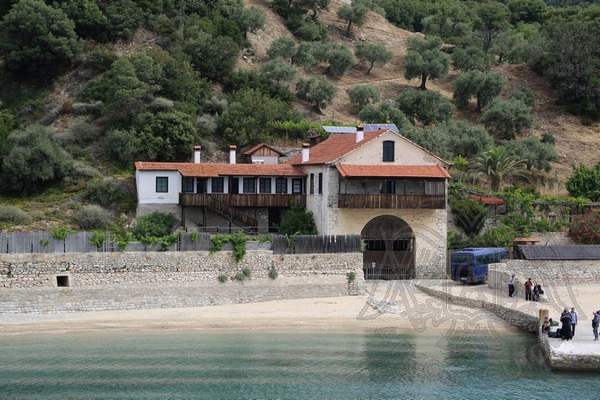
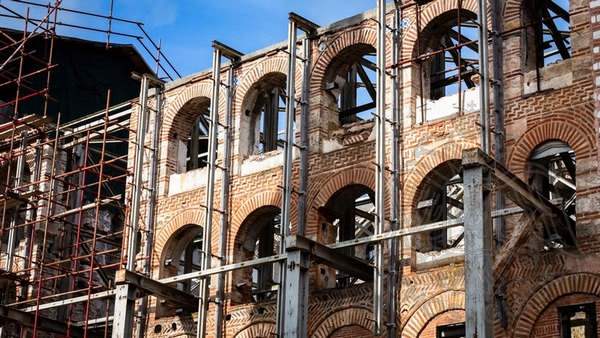
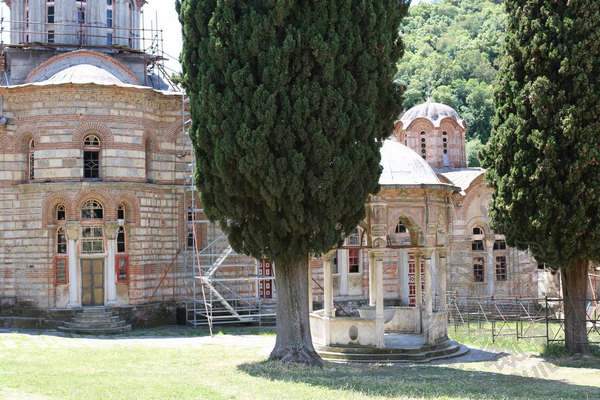 Saints such as
Saints such as 